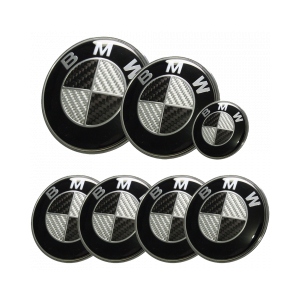Oil Seal Production Techniques and Best Practices for Quality Manufacturing
The Fundamentals of Oil Seal Manufacturing A Comprehensive Overview
Oil seals, also known as shaft seals or rotary seals, play a critical role in various mechanical systems by preventing leakage of lubricants and contaminants. Their effective operation is vital for the longevity and efficiency of machinery in diverse sectors, ranging from automotive to industrial manufacturing. Understanding the nuances of oil seal manufacturing is essential for ensuring the production of high-quality products that meet the rigorous demands of different applications.
1. Understanding Oil Seals
Oil seals are designed to retain lubricants within machinery while preventing contaminants, such as dirt and moisture, from entering. They typically consist of a flexible sealing lip made of elastomeric materials, which is combined with a metal casing or core for durability. The design can incorporate various features such as anti-reverse and garter springs to enhance performance and reliability.
2. Materials Used in Oil Seal Manufacturing
The material selection for oil seals is crucial, as it significantly influences their performance under varying conditions. Common materials include nitrile rubber (NBR), fluorocarbon rubber (FKM), and silicone. Each material presents unique properties
- Nitrile Rubber (NBR) Known for its excellent resistance to oil and fuel, NBR is widely used in applications where contact with petroleum products is expected.
- Fluorocarbon Rubber (FKM) This material offers superior resistance to heat and aggressive chemical environments, making it ideal for high-performance applications.
- Silicone Although it has lower oil resistance compared to NBR and FKM, silicone is often chosen for its flexibility and extreme temperature tolerance.
3. The Manufacturing Process of Oil Seals
The manufacturing process of oil seals typically involves several key steps
- Design and Prototyping Engineers and designers create specifications and prototypes, considering factors such as size, shape, and material properties. Computer-aided design (CAD) software is often used to develop precise models.
oil seal manufacturing

- Material Preparation Raw materials, including rubber compounds and metals, are prepared with careful consideration of the desired characteristics. Compounding involves mixing various additives to enhance the seal's performance.
- Molding and Forming The rubber is molded into the desired shape using techniques like compression or injection molding. For metal parts, machining processes are employed to achieve the required dimensions.
- Assembling Once the components are formed, they are assembled to create the final product. This may include inserting spring elements or protective rings to enhance sealing capabilities.
- Quality Control Rigorous testing and quality control measures are implemented to ensure that each oil seal meets industry standards and specifications. This includes checking for proper dimensions, material integrity, and leakage resistance.
4. Challenges in Oil Seal Manufacturing
While the production of oil seals appears straightforward, there are several challenges that manufacturers face
- Material Variability Variations in raw materials can affect the performance and longevity of oil seals. Maintaining strict quality control in sourcing and processing materials is crucial.
- Precision Requirements Oil seals must fit perfectly in their working environments to prevent leaks. Manufacturing tolerances must be finely tuned to ensure compatibility with shafts and housings.
- Environmental Considerations As industries move towards sustainability, oil seal manufacturers must adapt to eco-friendly practices, including the use of recyclable materials and reducing waste in production processes.
5. Future Trends in Oil Seal Manufacturing
The future of oil seal manufacturing is poised to evolve with advancements in technology and materials science. Innovations such as 3D printing and smart materials are set to revolutionize production methods, reducing costs and improving performance. Additionally, as industries increasingly prioritize energy efficiency and sustainability, manufacturers will need to explore biodegradable or less environmentally harmful materials for oil seals.
In conclusion, oil seal manufacturing is a complex process that requires significant attention to detail across various stages, from material selection to final testing. As technology advances, so too will the methods and materials used in oil seal production, ensuring that these essential components continue to meet the evolving needs of modern machinery.
-
The Ultimate Guide to Car Repair Kits: Tools and Essentials Every Driver Should Own
News Aug.01,2025
-
The Complete Guide to Oil Pan Gaskets: Sealing Engine Leaks the Right Way
News Aug.01,2025
-
Preventing Oil Leaks: A Complete Guide to Oil Pan Gaskets and Drain Seals
News Aug.01,2025
-
Everything You Need to Know About Oil Pan Gaskets and Drain Plug Seals
News Aug.01,2025
-
Essential for Car Owners: How to Use a Car Repair Kit to Deal with Minor Breakdown
News Aug.01,2025
-
Comprehensive Guide to Engine Oil Sump Gaskets and Related Seals
News Aug.01,2025
-
The Ultimate Guide to Boat Propeller Bearings and Trailer Wheel Bearings
News Jul.31,2025
Products categories















